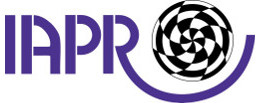Image mining methods are able to extract knowledge and highlight patterns, enabling very important applications such as medical and technical diagnosis, bioinformatics, precision agriculture, novel industrial support systems automation of scientific research, non-destructive testing, remote sensing and many others. The mathematical foundations, means and tools are of the first importance for the field. In essence, the mathematical aspects of image analysis and pattern recognition, mainly of image-mining – a leading line of the modern mathematical theory of image analysis - is the subject of IMTA-IX-2024.
The technological advances and the increase of storage capability support the growth of large and detailed, but possibly noisy, image data-sets. Hence, IMTA-IX-2024 topics are of utmost relevance being the perfect humus for giving rise to significant cross-contamination with other emerging fields, both theoretical and applied.
An example of how the main subject of image mining may merge profitably with other fields, such as computational topology, lattice algebraic methods, descriptive image algebras or machine learning, is the rise of new concepts and trends, such as topological features and invariants and their computation for digital images, representations and compression of N-d images based on topology, lattice-based learning from time-series images by video/image-mining, applications of fuzzy lattices in pattern recognition, application of image formalization space for representing of image-mining procedures via descriptive image algebras and many others.
Automation of image mining is one of the most important strategic goals in image analysis, recognition and understanding both in scientific and technological aspects. The main subgoals are developing and applying mathematical theory for constructing image models and representations allowable by efficient pattern recognition algorithms and for constructing standardized representation and selection of image analysis transforms. Automation of image mining is possible by the combined application of the mathematical theory of image analysis/understanding/recognition and the mathematical theory of pattern recognition.
Automation of image processing, analysis, estimating and understanding is one of the crucial points of theoretical computer science having decisive importance for applications, in particular, for diversification of solvable problem types and for increasing the efficiency of problem-solving.
The role of an image as an analysis and estimation object is defined by its specific and inalienable informational properties. Image is a mixture and a combination of initial (raw, “real”) data and its representation means, of computational procedures and of the physical nature and of the models of objects, events and processes being represented via an image.
The specificity, complexity and difficulties of image analysis and estimation (IAE) problems stem from necessity to achieve some balance between such highly contradictory factors as goals and tasks of a problem solving, the nature of visual perception, ways and means of an image acquisition, formation, representation, reproduction and rendering, and mathematical, computational and technological means allowable for the IAE.
The mathematical theory of image analysis is not finished yet. It is passing through a developing stage. It cleared not so long ago that only intensive creating a comprehensive mathematical theory of image analysis and recognition (in addition to the mathematical theory of pattern recognition) could bring a real opportunity to solve efficiently application problems via extracting from images the information necessary for intelligent decision-making. The transition to practical, reliable and efficient automation of image mining is directly dependent on introducing and developing mathematical means for IAE.
The participants will enjoy the opportunity to discuss a methodology, mathematical and computational techniques for automation of image mining on the base of mathematical theory for IAE. Another important task of the workshop is to discuss artificial intelligence techniques, in particular, linguistic and knowledge engineering tools for image mining – image knowledge bases and image science ontologies – and to estimate the prospects of the algebraic approaches in representation of image analysis knowledge in this IAE environment. The interpretation of mathematical and linguistic techniques will be illustrated by application problems, mainly from biology and medicine, from automation of scientific research, industrial applications and of many other domains generating breakthrough and difficult application tasks.
Topics
- Methodological advances in image analysis and pattern recognition with a special focus on
- Algebra
- Discrete mathematics
- Computational Topology
- Machine Learning
- New Mathematical Techniques in Image Mining
- Algebraic Approaches
- Image and Lattice Algebras
- Lattice-based Deep Hierarchical Representations and Neural Networks
- Discrete Mathematics Techniques
- Descriptive Techniques and Ill-Structured Data Representation Problems
- Structural and Syntactic Techniques
- Multiple Classifiers and Fusion of Algorithms
- Pattern Recognition Techniques in Image-Mining Environment
- Other Mathematical Techniques
- Image Models, Representations and Features
- Feature Detectors
- Features from Autoencoder Networks
- Automation of Image and Data Mining
- Image and Ill-Structured Data Analysis
- Image Mining, Computer Vision and Knowledge-Based Systems
- Image Databases
- Image Mining Technologies
- Artificial Intelligence Techniques in Image Mining
- Knowledge Representation, Processing, Extracting and Analysis
- Image Knowledge Bases
- Linguistic Tools for Image Mining (Image Science Ontologies; Image Science Thesauri)
- Applied problems
- Bioinformatics
- Bioengineering
- Medical applications
- Industry and Economics
- Cultural Heritage
- Other Important, Difficult and Interesting Applied Problems
